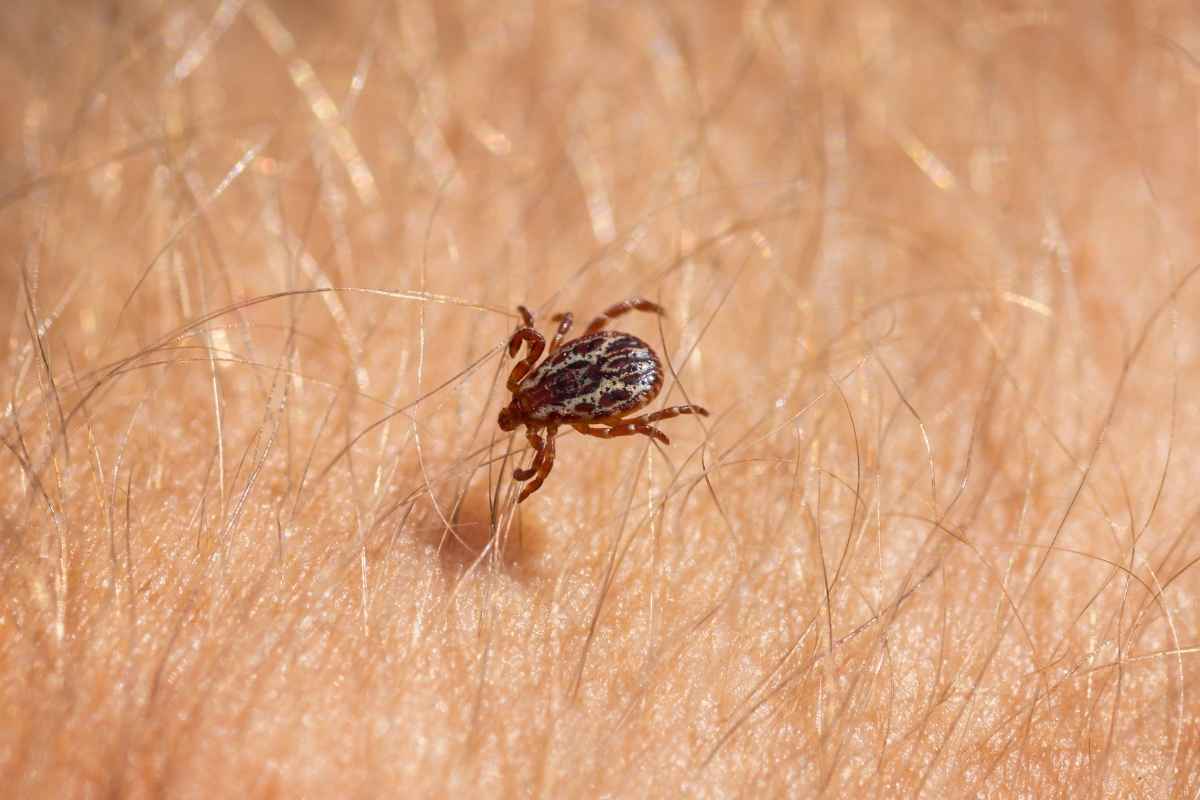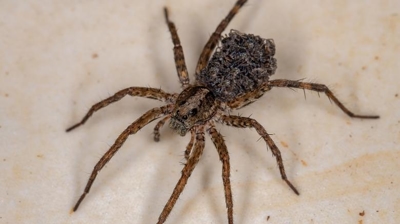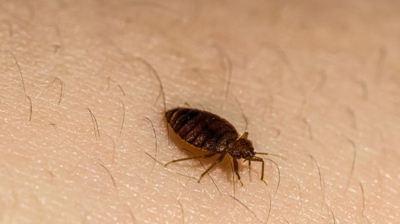
American Dog Ticks

American Dog Ticks
American dog ticks (Dermacentor variabilis), also known as wood ticks, are considered harmful due to several health risks they pose to both humans and animals. Their potential danger stems from their role as disease vectors, their parasitic nature, and the secondary complications their bites can cause. Here are some of the ways in which they are harmful:
Disease Transmission
American dog ticks are primary vectors for several serious diseases:
- Rocky Mountain Spotted Fever (RMSF): This is the most significant disease transmitted by Dermacentor variabilis. RMSF is caused by the bacterium Rickettsia rickettsii and can be fatal if not treated promptly. Symptoms include fever, rash, headache, and gastrointestinal distress, and can progress rapidly to severe complications such as organ failure or death.
- Tularemia: Caused by the bacterium Francisella tularensis, tularemia can result in ulceration at the bite site, fever, swollen lymph nodes, and respiratory symptoms if inhaled. Though less common than RMSF, tularemia is highly infectious and can be severe.
- Tick Paralysis: This is a rare but potentially life-threatening condition caused not by a pathogen but by a neurotoxin present in the saliva of the female tick. Prolonged feeding by the tick can cause progressive paralysis, starting in the legs and ascending to the respiratory system if not addressed.
Parasitic Impact on Animals
- Domestic pets, especially dogs, are frequent hosts of the American dog tick. Heavy infestations can cause significant blood loss (anemia), skin irritation, and discomfort.
- Ticks can transmit canine diseases such as canine ehrlichiosis and babesiosis (though more commonly associated with other species of ticks), which are still a concern in areas where multiple tick species co-exist.
- Repeated infestations can lead to stress, dermatitis, secondary infections, and behavioral changes due to discomfort.
Health Concerns for Humans
- Tick bites often go unnoticed because their saliva contains anesthetic properties that numb the bite site. This allows them to feed undetected for several days, increasing the risk of disease transmission.
- Even in the absence of disease, bites can cause localized skin irritation, allergic reactions, or secondary bacterial infections if scratched or improperly removed.
The American dog tick is a public health concern due to its ability to transmit serious diseases such as Rocky Mountain spotted fever and tularemia, its role in causing tick paralysis, and its negative impact on pets and wildlife. Its resilience and adaptability make it a persistent threat in many environments, reinforcing the importance of vigilant tick control and public awareness, especially during peak activity seasons in spring and summer.
American Dog Tick Control
Hiring our professional pest control for American dog ticks (Dermacentor variabilis) is highly advisable for several reasons. These ticks are not only a nuisance but also a significant health risk for humans and pets:
- Disease Prevention: American dog ticks are vectors for serious diseases, most notably Rocky Mountain spotted fever (RMSF) and Tularemia. Even a single tick bite can transmit these illnesses, which can be severe or life-threatening if untreated. Our professionals know how to target tick populations effectively to reduce the risk of disease exposure.
- Effective Tick Elimination: Ticks spend part of their life cycle in lawns, leaf litter, shrubs, and shaded areas, making them difficult to reach with over-the-counter products. Our professional pest control uses specialized insecticides and acaricides tailored for tick elimination, strategic application methods that reach the areas ticks inhabit, reducing the likelihood of re-infestation, and integrated pest management (IPM) techniques that target the varying life cycle stages of ticks, not just adult ticks.
- Safety for Family and Pets: American dog ticks often infest areas where pets and children play. Using our professional services ensures proper, regulated application of pesticides to minimize chemical exposure, and ongoing recommendations for safe outdoor practices, like yard landscaping adjustments, to naturally reduce tick habitat.
- Long-Term Prevention: Ticks reproduce and thrive in specific conditions. Our professionals can treat both immediate infestations and implement strategies to prevent future tick problems, identify and treat problematic hotspots, such as shaded wooded edges or tall grass around your property, and provide seasonal control plans, ensuring your property is protected year-round.
- Time and Effort: Manual tick control can be labor-intensive and often ineffective, requiring constant yard maintenance, inspection, and chemical application. Our professionals save you time and hassle and use proven methods that produce faster and more reliable results.
American dog ticks are not just a minor pest—they pose real health risks and are challenging to eliminate without expert knowledge. Hiring our professionals ensures your home and yard are treated safely, effectively, and sustainably, giving peace of mind to your family and pets.
What Do American Dog Ticks Look Like?
American dog ticks (Dermacentor variabilis) have distinct characteristics that make them recognizable. Here is a detailed description of what American dog ticks look like:
- Size: American dog ticks are relatively large compared to other tick species. Adult females typically measure around 5 mm in length, while males are slightly smaller.
- Color: These ticks have a characteristic brown coloration. The dorsal (upper) side of their body is usually brown, and they may have a reddish-brown to yellowish scutum (shield-like structure) near their head, which is more prominent in females.
- Shape: American dog ticks have an oval-shaped body when engorged with blood, but they appear flatter and more rounded when unfed. The scutum in females gives them a somewhat flattened appearance.
- Legs: They have four pairs of legs, making a total of eight legs, which is a characteristic feature of arachnids like ticks.
- Mouthparts: Like all ticks, American dog ticks have piercing-sucking mouthparts called a hypostome that they use to anchor themselves to their host during feeding.
- Life Stages: American dog ticks go through four life stages: egg, larva, nymph, and adult. The nymphs and adults are the stages most likely to attach to hosts. The nymphs are smaller and less noticeable than the adults but share a similar overall appearance.
- Host-Seeking Behavior: When actively seeking a host, American dog ticks climb vegetation such as grass and low shrubs. They extend their front legs, ready to attach to passing animals, including dogs, humans, and various wildlife.
- Engorgement: As American dog ticks feed on the blood of their host, they become engorged and their body swells. Engorged ticks may appear grayish or bluish due to the blood they've consumed.
The appearance of American dog ticks can vary slightly depending on factors such as their life stage and whether they are engorged with blood. Recognizing these characteristics is essential for identifying American dog ticks, especially if you or your pets spend time in areas where these ticks are prevalent. Prompt and proper removal of attached ticks is crucial to reduce the risk of tick-borne diseases.
Where Are American Dog Ticks Found?
American dog ticks (Dermacentor variabilis) are commonly found in various habitats across North America, particularly in the eastern and central regions of the United States and parts of Canada. To provide a comprehensive understanding of where you might encounter American dog ticks, here are some key locations and habitats where they are typically found:
- Grassy and Wooded Areas: American dog ticks thrive in a variety of habitats, including grassy fields, meadows, and wooded areas. They can often be found in tall grasses and vegetation, where they climb to seek out hosts.
- Trail and Hiking Areas: Hikers and outdoor enthusiasts may encounter American dog ticks while walking on trails, especially in areas with a mix of grassland and woods.
- Parks and Recreational Areas: Public parks, campgrounds, and recreational areas that have grassy spaces and wooded sections can be suitable habitats for American dog ticks.
- Residential Backyards: Ticks can sometimes venture into residential areas, particularly if there are wooded or grassy patches nearby. If you have a yard with tall grass or shrubs, it's possible to find American dog ticks there.
- Wildlife Habitats: Ticks are often associated with wildlife, and you may encounter American dog ticks in areas where deer, raccoons, opossums, and other wildlife are present. These animals can serve as hosts for ticks, which then drop off and can attach to humans or pets.
- Animal Shelters and Kennels: Places where dogs and other animals are kept can be infested with ticks, including American dog ticks. Pet owners should be vigilant when visiting such places to prevent tick infestations in their pets.
- Grassy Fields and Pastures: Agricultural areas with tall grasses and pastures can also be suitable habitats for American dog ticks, as they can attach to livestock.
- Coastal Regions: While American dog ticks are more commonly found inland, they can be present in coastal regions, particularly in areas where there are suitable habitats such as tall grasses and wildlife.
American dog ticks are most active during the warmer months, from spring through early fall. To reduce the risk of tick encounters and tick-borne diseases, individuals should take precautions when venturing into tick-prone areas, wear appropriate clothing, use tick repellents, and perform regular tick checks on themselves and their pets after outdoor activities. Removing ticks promptly and correctly is crucial to minimize the risk of disease transmission.
What Do American Dog Ticks Eat?
American dog ticks (Dermacentor variabilis) go through various life stages, each with different feeding habits. What American dog ticks eat depends on their life stage:
- Larvae: Larval American dog ticks have six legs and are very small, measuring only about 0.5 mm in length. They primarily feed on the blood of small mammals and birds. Common hosts for larvae include mice, squirrels, and other small rodents.
- Nymphs: Nymphs have eight legs and are slightly larger than larvae but still relatively small, typically around 1-2 mm in length. They feed on slightly larger hosts than larvae, often choosing rodents, larger birds, and sometimes reptiles as their hosts.
- Adults: Adult American dog ticks have fully developed reproductive organs and are the largest stage of the tick's life cycle. They are opportunistic feeders, and their diet depends on the availability of hosts. While their common name suggests they primarily feed on dogs, they can also attach themselves to other mammals, including humans, as well as larger wildlife such as deer, raccoons, and livestock. Adult ticks use their specialized mouthparts to pierce the skin of their host and feed on their blood.
Both male and female adult ticks feed on blood to obtain the necessary nutrients for reproduction. Female ticks, in particular, require a blood meal to produce eggs. After engorging on a blood meal, female ticks drop off the host and lay eggs, completing the life cycle.
American dog ticks are not herbivorous; they are obligate blood-feeding ectoparasites, meaning they rely solely on blood as their source of nutrition at all life stages beyond the larval stage. Additionally, their choice of host can vary depending on factors such as host availability, location, and tick life stage. To prevent tick infestations in pets and reduce the risk of tick-borne diseases in humans, it's crucial to take preventive measures and perform regular tick checks after outdoor activities in tick-prone areas.
American Dog Tick Life Cycle
The life cycle of American dog ticks (Dermacentor variabilis) follows a four-stage process: egg, larva, nymph, and adult. Understanding this life cycle is essential for managing tick populations and preventing tick-borne diseases. Here's a comprehensive overview of the life cycle of American dog ticks:
- Egg Stage: The life cycle begins when an adult female tick finds a suitable host and feeds on its blood. After engorging on the host's blood, the female drops off and seeks a sheltered location, such as leaf litter or the ground. She then lays a batch of several thousand eggs, typically in late spring or early summer.
- Larval Stage: The eggs hatch into larvae, which are tiny and have six legs. Larvae are often referred to as "seed ticks" because of their small size. They are generally not host-specific and will feed on a wide range of small animals, including rodents and birds. After feeding for several days, larvae drop off the host and molt into nymphs.
- Nymph Stage: Nymphs have eight legs, like the adult ticks, but are smaller and more difficult to spot. They typically feed on slightly larger hosts, such as rodents or small mammals. Nymphs require a blood meal to progress to the adult stage. After feeding, nymphs drop off the host and molt into adult ticks.
- Adult Stage: Adult American dog ticks are sexually mature and have distinct characteristics. Adult females are larger than males and have a brown body with a prominent scutum (shield-like structure) near the head. Adult males are smaller, with a more rounded body shape. Both males and females seek larger hosts, including dogs, humans, and larger mammals. After feeding, adult females can become engorged, increasing in size. Once engorged, females drop off the host and lay eggs, completing the life cycle.
The entire life cycle of American dog ticks typically spans two to three years, depending on environmental conditions and the availability of hosts. The life cycle progression from egg to larva, nymph, and adult is essential for the tick's survival and reproduction. It's important to note that American dog ticks are most active during the warmer months, and tick populations can vary from year to year. Understanding their life cycle can aid in implementing effective tick control and prevention strategies.

Hear From Our Happy Customers
-
"Great Communication"
Tech was on time, communication was great, and he accommodated my needs.
- Alonzo W. -
"Fantastic & Patient"
Jarvis was fantastic and patient. He answered my questions with an in-depth explanation and addressed all of my areas of concern. Would love for him to be my assigned tech going forward. Well done!
- Yonnette M. -
"Wonderful Service"
Wonderful service. Jarvis is great. Took care of everything I needed. Thank you!
- Henry P. -
"Very Knowledgeable"
The tech that arrived was courteous, professional, and very knowledgeable. He was Great.
- Uerial I. -
"Exceeds Expectations"
I can’t say enough positive things about this company... The tech that came out, Jarvis went above and beyond my expectations. Thank you guys, I will continue using your services.
- Jake M. -
"Professional & Considerate"
I’m pleased with Miche services. Jarvis came today. Professional and considerate. Thank you!
- Judy B.



